Features of 360 degree cameras

Just five years ago, 360-degree panoramic photography seemed like the technology of the future. Yes, even smartphones were already able to take 3-5 frames with a gradual rotation of the operator and their subsequent automatic gluing, but There were a lot of disadvantages to the results of such gluing:
- the parts were not photographed at the same time, and this could be striking;
- gluing often turned out to be a curve.
What we call 360-degree cameras existed even then, however, only the most serious professionals had it and were used in few places. But today the future has come to our home - now anyone can buy a panoramic camera for relatively little money and use it in everyday life.
Description
A modern panoramic camera, in contrast to the tricks of five years ago, is designed for simultaneous shooting of 360-degree panoramas. Its capabilities are much wider than those described above for a smartphone - it can no longer only take pictures, but also shoot video simultaneously in all directions. You can see how this works using the example of panoramic videos in the same Youtube, which has been supporting the download of the corresponding content for several years.
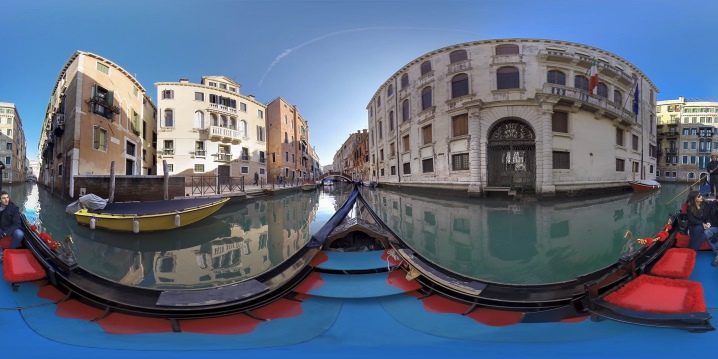
The beauty of such a video is that it gives a certain effect of presence. Regular videos allow us to virtually visit a particular event, but we are limited only to those plans that the author of the video considered relevant. If the shooting was carried out professionally, then the viewer will have the opportunity to evaluate what is happening from different angles and see all the most interesting, however, this does not provide the full effect of presence - it is still just a classic TV picture.
A 360-degree camera allows the viewer to spin - he seems to be standing in one place, but at the same time he can turn in the other direction at any moment.
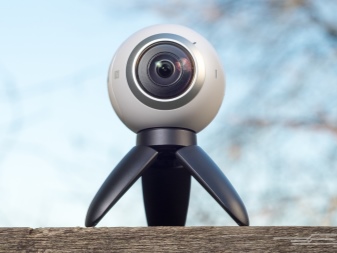
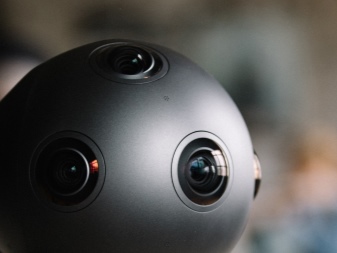
As a result, these cameras have become insanely popular in two situations - for broadcasting views of beautiful observation platforms and for demonstrating certain mass events - concerts, performances, and so on... Such a camera is installed in the thick of events, and you yourself decide where to look. At the same time, you can watch the same video several times, and each time it will look different - it all depends on where you are looking at this time.
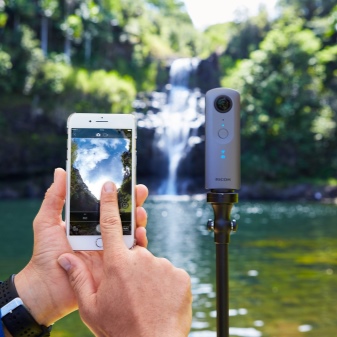
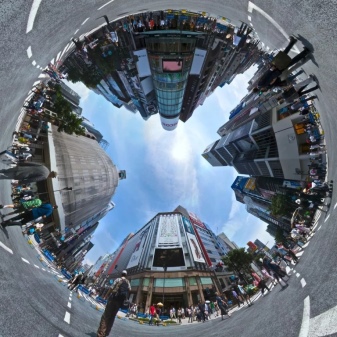
The 360-degree camera and the videos taken from it are often confused with virtual reality, which is fundamentally wrong. Virtual reality is, as a rule, a computer simulation in which the observer has the ability to move, at least to a limited extent. Panoramic circular video does not provide such an opportunity - you can look around, but not move.
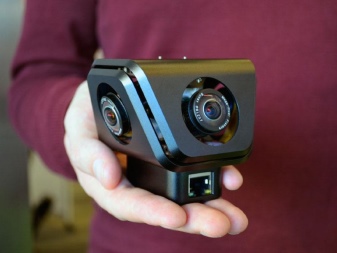
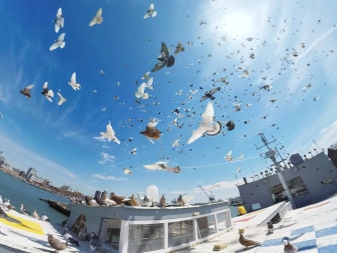
A circular camera usually looks like a small balllifted up (to rise above the people around) on a thin stand. The number of lenses she has is usually noticeably more than one, but this is only if we are talking about a professional model. In pursuit of more affordable prices, manufacturers often produce consumer cameras with two lenses.
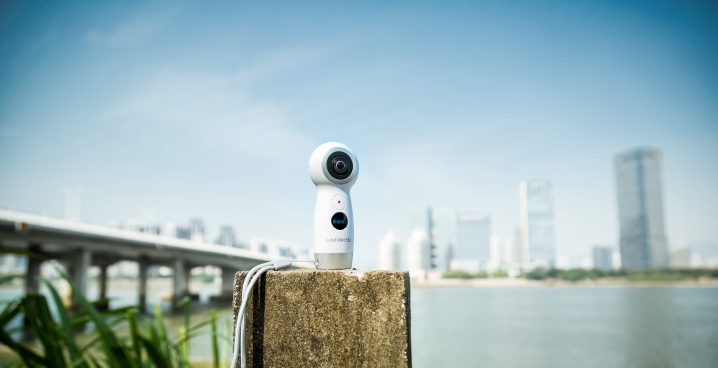
How does it work?
The fewer lenses a camera has, the more wide-angle it is. allows the device to capture as much of the horizon as possible... If an amateur circular camera has only two lenses, then most often it is Fish eye - special lenses, whose field of view is usually 180-220 degrees.They are located on opposite sides of the round body, and if the view of each is at least slightly more than 180 degrees, their "fields of view" partially overlap.
It should be noted that with two lenses, the "blind zone", as a rule, is still there - it is located on the sides of the camera between the lenses and gradually narrows with distance from the unit.
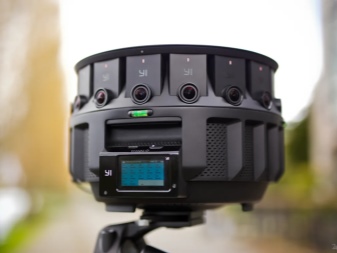
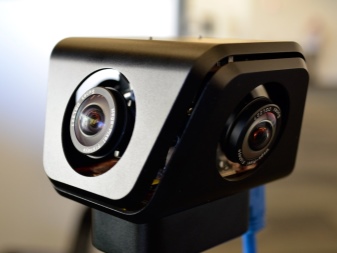
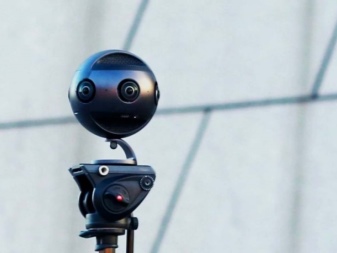
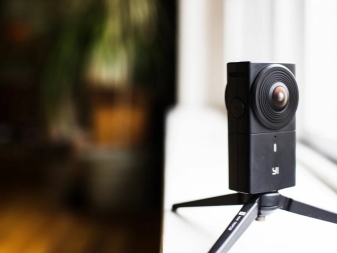
When photographing or filming a video, the camera receives two images at once - one from each lens. As a rule, she sews them into one whole on her own - for this she has built-in software. At the same time, professionals sometimes use cameras that do not automatically stitch anything, but simply take separate frames, which are then downloaded to a computer and stitched manually. This is because machine stapling cannot be perfect. A good modern camera has a thin seam, and it, focusing on objects that hit both lenses at once, stitches the frames quite well.
However, if the subject was close to the camera, then automatic stitching will inevitably give distortion, which will be difficult to miss.
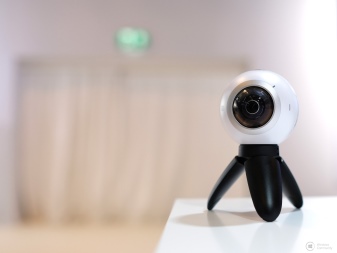
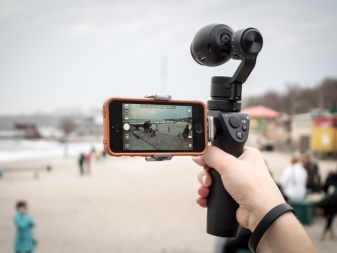
Species overview
At some point, the developers realized that a 360-degree camera could theoretically find application in many different industries, you just need to release special models that, one way or another, will be optimal for the tasks at hand. This is not to say that such equipment is directly classified according to certain criteria, but each model may have characteristics that indicate the characteristics of the equipment. Consider what markings on the box are important when choosing a camera.
- 4K... In recent years, such a mark has been very important and popular - all consumers know that it means a good camera, but not everyone understands why. In fact, 4K means that the camera produces an image with an expansion of about 4 thousand pixels horizontally (there are several standards, each of which has its own exact width and different heights). Such a camera is good for getting very detailed images with a lot of small details. At the same time, to assess all the advantages of such a technique, one must either have a display capable of demonstrating the same 4K at once, or zoom in on the image, and when watching video on more modest monitors, this is in most cases impractical.
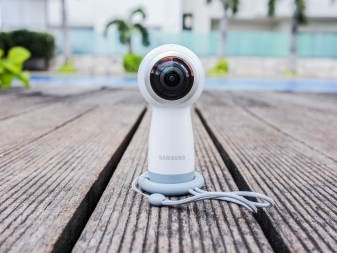
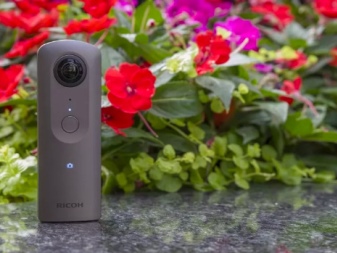
- Spherical... A 360-degree camera assumes a circular view in one plane - the lenses, of course, take a little up and down, but still give a rather narrow picture, especially compared to its length. Spherical models are designed to further expand the effect of presence - to make it so that the viewer can look both "under his feet" and up. For this, the device is equipped with additional lenses that look not only from the sides in the same plane, but also in other directions. Most often, a spherical camera is simply supplemented with one lens directed strictly vertically, but theoretically there can be more additional “eyes”.
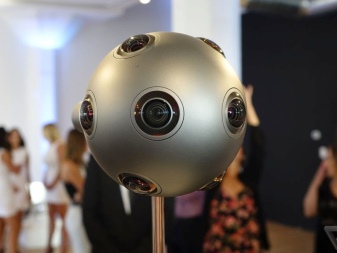
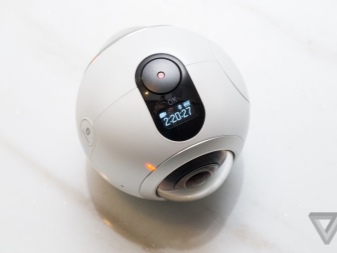
- Ceiling... In fact, this is the same spherical camera, only "upside down" - it has mounts on top and there are no lenses, but it shoots what is happening below in all directions, including directly below itself. This design can be used as an alternative to several security cameras, but it is also relevant for filming various public events.

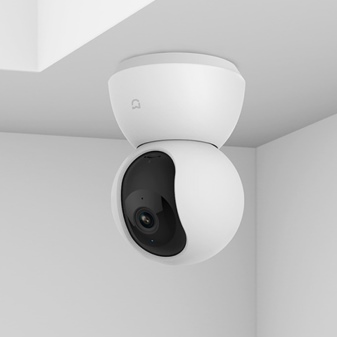
- Circular. Actually, this is the simplest version of a 360-degree camera. As the name suggests, it shoots in a circle around itself, but not up or down - it would already be a spherical model. Most inexpensive household models are just ordinary circular cameras that make the final picture from just two separate frames.
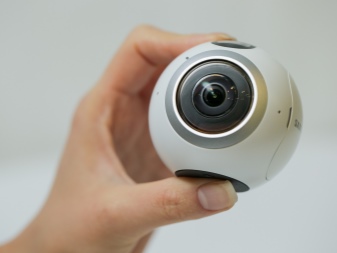
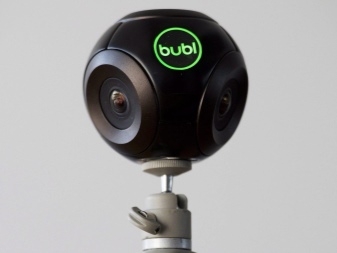
Rating of the best models
A fair distribution of seats in this segment of technology is not possible - it all depends on the purpose for which the customer needs the camera. Therefore, we decided not to allocate seats, but simply to allocate several original models that have been popular for a long time and have passed various tests.
- Acer Holo 360. For 40 thousand rubles you get a unit with two lenses of 16 megapixels each. The device shoots video in a quality not higher than 4K, but the photo gives out more detailed ones. It is curious that the manufacturer even pushed the screen into the case, so it turned out to be half a smartphone - you can even make video calls from it!

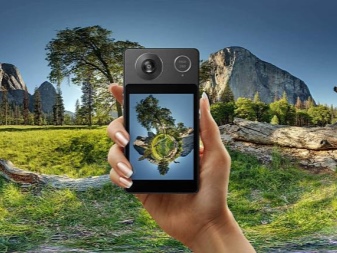
- Wunder 360 C1. If the phrase "made in China" does not scare you, this model is worth paying attention to. It costs 15 thousand rubles, and you should not expect too much from it, but compared to other Chinese equipment, it is still awesome. Two 8-megapixel lenses will produce 3K video and 4K photos, which is not too bad. Costing a penny, the unit itself stitches the picture, which is a rarity, it broadcasts on social networks itself, and even is equipped with a good stabilization system along six axes! In a word, the clear leader in the price-quality category.
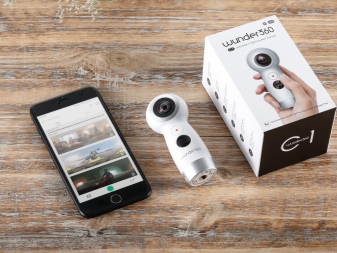

- Kodak PIXPRO Orbit360. Two 20 megapixels for 50 thousand rubles. The concept of the model is interesting in that its lenses are different: one is wide-angle, and the other is domed. Accordingly, you can shoot not only for both at once, but also for one - it will turn out to be interesting too. The unit is protected from moisture, dust, shock and extreme temperatures.
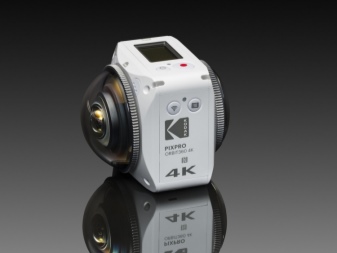
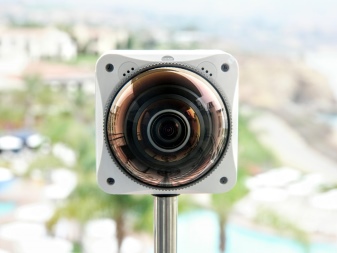
- Yi 360 VR. Two lenses of 16 megapixels, but with what viewing angle - 220 degrees each! The device is good in that it shoots a very detailed and clear video even in low light. Auto-stitching of videos is possible only up to 4K, although the unit produces a picture better.
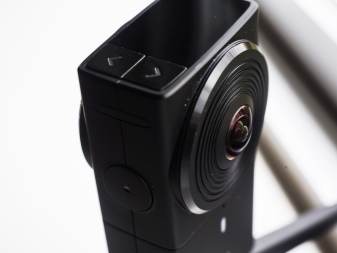
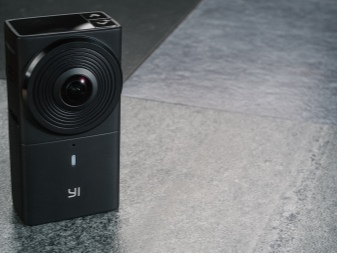
How to choose?
Choosing a 360-degree camera for the uninformed consumer is complicated not only by the fact that he is a newbie in this field, but also by the lack of some "best" option. It is necessary to choose a panoramic camera, starting from specific own needs, and a universal solution that would be equally good and appropriate in all situations without exception simply does not exist. Nevertheless, let's set some general directions that will help the reader understand which unit is worth spending money.
Since most of the readers will probably be new to the topic, many of them will be interested not in professional cameras, but in inexpensive, but at the same time, normal quality equipment. Unknown Chinese brands are already releasing simple equipment "for schoolchildren" for mere pennies, but then you should be prepared for the fact that the purchase will bring not so much joy as disappointment. Knowledgeable people advise beginners who are serious about buying to pay attention to models Samsung Gear 360 or Ricoh Theta S.
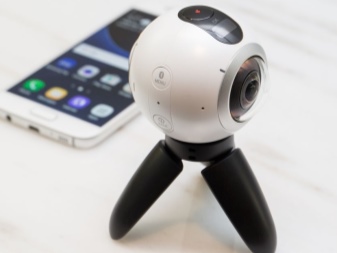
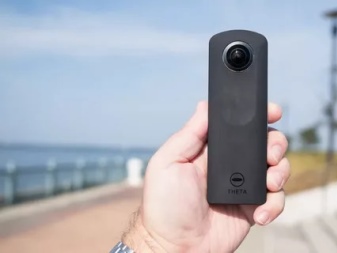
Do not think that such a purchase will be completely cheap - you will have to pay up to $ 400 for each of these models. They have only two lenses, but they are of high quality, and for a beginner, more is not required. It is important that the compact unit is able to work with a special application for a smartphone, where you can immediately evaluate the results of the survey without having to make your way to the computer. The second of the named models can also organize live broadcasts, which is valuable for a blogger. These models will not provide any super-resolution, but you will not be ashamed of them.
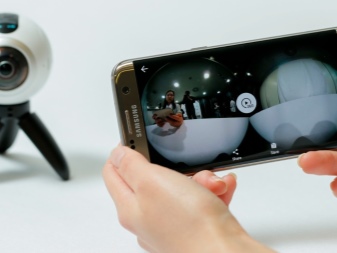

The middle level implies increased hardware requirements. This segment is often exemplified by GoPro Omni. So that you understand how much a higher level this is, we will simply voice the approximate cost - 5 thousand bucks. There are already six lenses here, but, as you understand, they capture the surrounding picture much better and more correctly, and also provide an image not even in 4K, but in 8K. The supplier for the named money offers not only the unit itself, but also specialized software for viewing and editing the received content. At the same time, the model does not provide an opportunity to evaluate the received content immediately, and this is a significant disadvantage.
Nevertheless, experts advise focusing on its characteristics if you are studying model lines to reach the middle level of panoramic blogging.
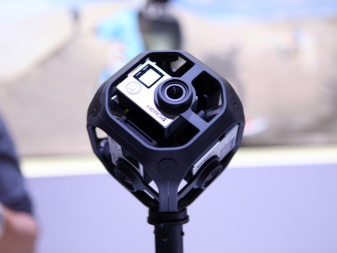

Top professional models turn out to be even better. For example, Nokia OZO will cost a generous buyer 45 thousand dollars, but what kind of car! Not only is the device equipped with eight lenses at once, but it also comes with a separate computer with already installed software for image processing! Undoubtedly, such equipment allows you to broadcast live, but, by the way, without incredible resolutions - only in HD. However, even such a unit is a choice of popular TV channels and non-poor studios, as well as companies engaged in the development of full-fledged virtual reality.

Your model may well be somewhere at the junction of segments, so you should focus more on specific characteristics. Here they are.
- Number of lenses. Enough has been said about this above - 2 or 3 lenses are the norm for amateur units, but cannot be considered a ceiling for 360-degree equipment.
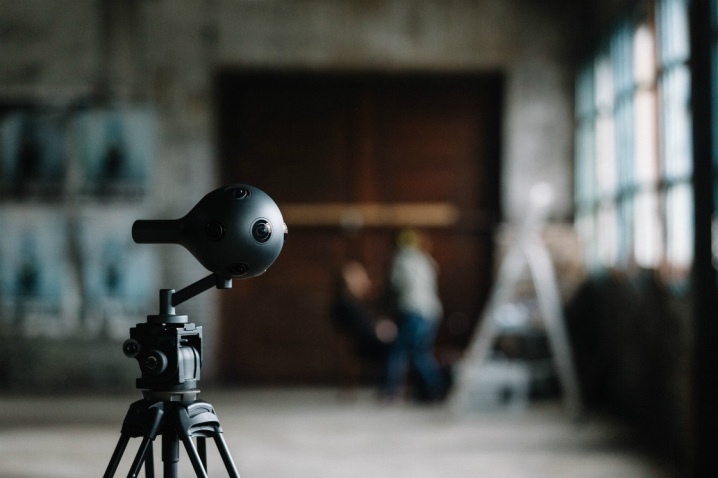
- Permission... Good old HD is slowly becoming a thing of the past - especially since pixels in a circular camera are often split across the entire horizon. As a rule, even amateur panoramic cameras shoot at a quality not lower than 2K. 4K is already a decent level for most modern displays, and 8K is a performance worthy of professionals.

- Frame frequency... Most inexpensive models have a video capture rate of 25-30 frames per second, and this is the norm. To capture especially dynamic moments, it makes sense to set the high frame rate mode - it is available in almost all models, but it hurts the resolution. Professional units are capable of accelerating up to 120 frames per second without losing quality at least in 4K.
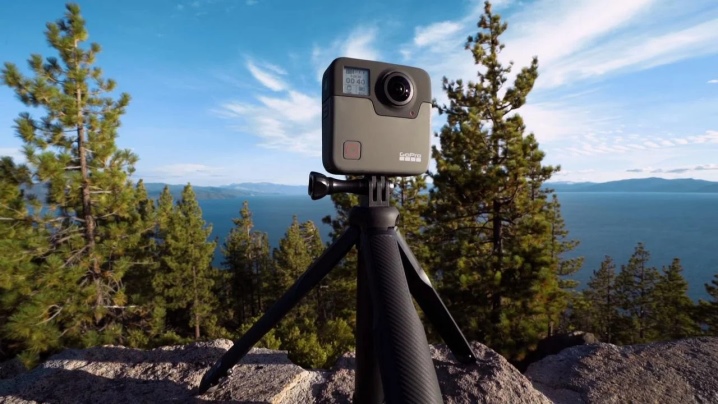
- Viewing angle... 360 degrees by themselves are just one plane. On spherical models, they literally write that the angle is 360 by 360. If the box says that 360 by 270, it means that this is an ordinary circular camera, you will not see the top and bottom.
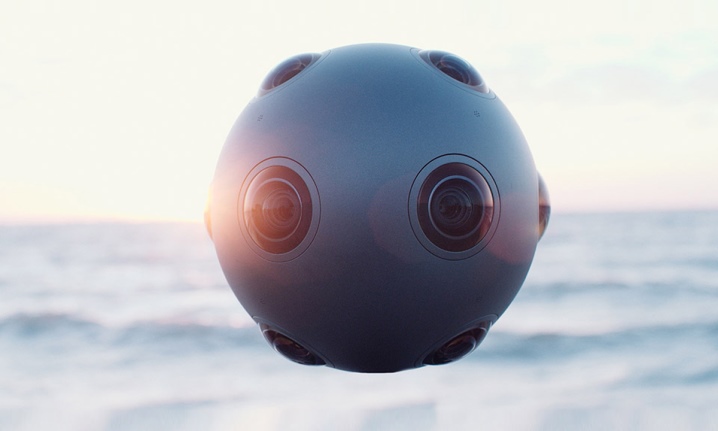
- Sound quality. Not single lenses - there should be several microphones too, if you want the sound to match the picture. In good models, it will increase or decrease in the right way depending on where you are "looking" when watching the video you have shot.
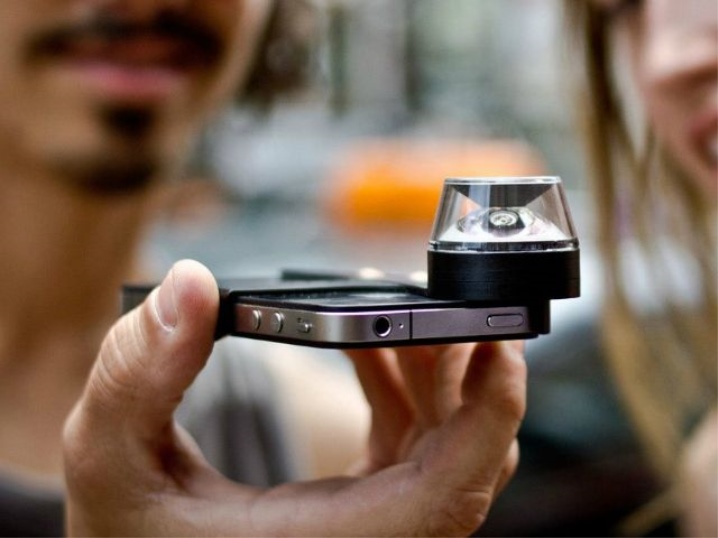
- Battery. Due to their compact size and large number of lenses, most circular cameras have relatively short battery life. However, if the unit does not withstand even 60 minutes, then there will be more torment with it than productive work.

- Stitching. Some cameras do this automatically, while others need a computer to do this. If the equipment does not know how to stitch the frames itself, then you will definitely not organize a live broadcast from it. However, you need to make sure that the stitching is adequate.
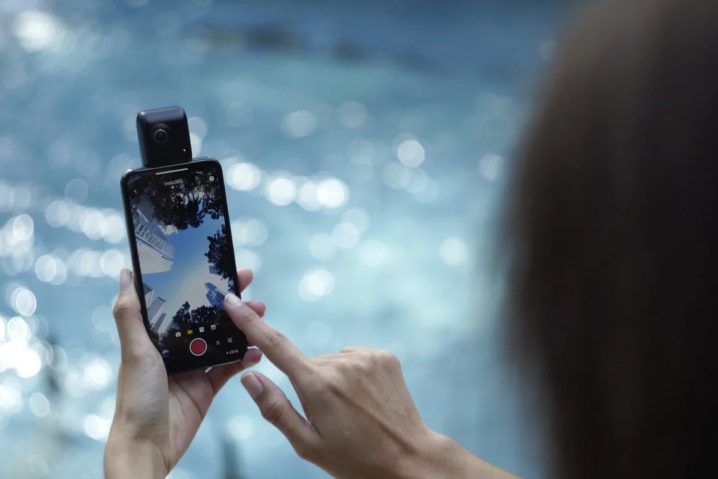
- Dimensions. If you are planning to travel with a camera, or, even more so, to shoot your extreme entertainment with it, make sure that the equipment is as compact as possible. Any model is suitable for stationary photography, as long as there is a tripod mount.
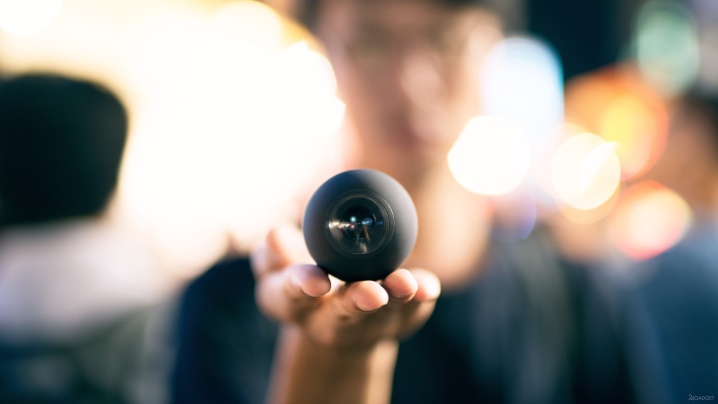
- Additional protection. As with conventional cameras, some circular models have additional protection against moisture and dust. With such you can even go to the desert even under water, but they are certainly more expensive.
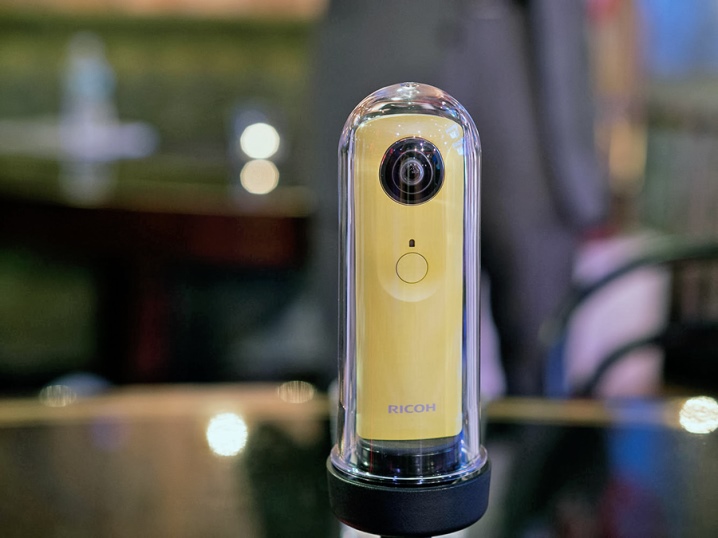
A video review of the compact 360-degree camera GoPro Max is presented in the following video.













The comment was sent successfully.